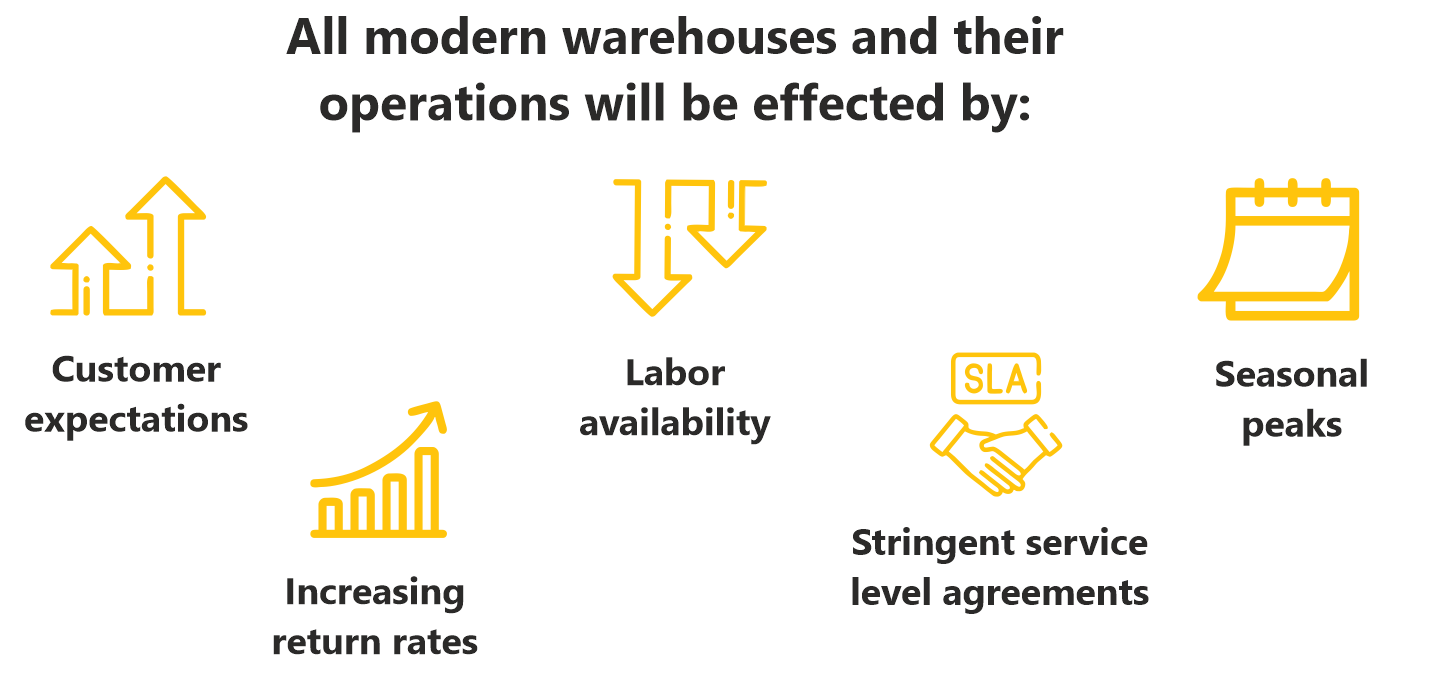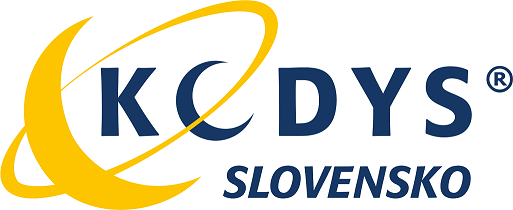
Warehouse Management System WMS
Warehouse management system for small and medium-sized companies
One of the biggest impacts on supply chain processes in recent years has been the shift in consumer preferences towards online shopping. Customers don't care whether they order from an e-commerce giant or a small and medium-sized business (SMB) - they expect the same level of shopping convenience and fulfillment options. This poses a significant challenge for businesses with little or no experience of running an ecommerce business.
However, many SMBs are finding that their current warehouse processes and management tools are not up to the task.
The majority of SMEs do not use digital supply chain management tools and only 20 percent use supply chain software.
For SMEs that have adopted supply chain software , it's often an ERP with a built-in inventory management system that tracks transactions and updates inventory data.
Such systems don't eliminate paper and manual processes, nor can they help automate basic warehouse processes such as receiving and picking, order picking and packing, and shipping - all processes that need to be streamlined for successful e-commerce operations.
The obvious solution is to implement a warehouse management system (WMS). However, since many of these are aimed at large warehouses and enterprise-level distribution centers, they are typically not suitable for small and medium-sized businesses. Instead, SMBs need solutions that provide comprehensive yet flexible functionality right out of the box and support e-commerce business models while meeting their organizational and budgetary needs.

Improving functionality
To take SMB warehouse performance to the next level, warehouse operations need to become smarter and more system-driven. To do this, the WMS must automate key warehouse processes and meet the following requirements:
Support all core WMS functions - receiving and staging, inventory management, inventory, job entry, wave planning, order allocation, order picking and packing, replenishment, dispatching and labor management.
E-commerce functionality to support online order processing with the flexibility to process multiple order types.
Built-in comprehensive shipping functionality with predetermined shipping options and Courier Express Parcel Services (CEP).
Integration capability for key complementary solutions - ERP, WCS and mobility solutions as well as voice-driven workflow solutions to increase picking speed and accuracy.
Streamline implementation
Implementation itself can be a barrier to WMS adoption in SMBs. SMEs typically do not have the IT resources to dedicate to WMS implementation and cannot support long and complex implementation phases.
What can make WMS deployment more efficient?
Flexibility - The WMS must be able to support the operational needs of each customer's warehouse. Solutions that can be customized by configuring parameters without lengthy customization and additional development are ideal.
ERP connectivity - Ready-to-use interfaces to commonly used ERPs (e.g., Microsoft D365, SAP BusinessOne, on-premises ERPs, and others) will save significant integration work and costs.
 A WMS that supports a simplified implementation process can be deployed in a relatively short time. Solutions that require an average of 90 days to get up and running or approximately 600-800 hours of implementation work. Also, choosing to deploy a WMS in the cloud, as opposed to on-premises, can further simplify and shorten the process.
A WMS that supports a simplified implementation process can be deployed in a relatively short time. Solutions that require an average of 90 days to get up and running or approximately 600-800 hours of implementation work. Also, choosing to deploy a WMS in the cloud, as opposed to on-premises, can further simplify and shorten the process.
Since the WMS will be used by almost everyone in the warehouse, from mobile workers to back-office and management, an intuitive user interface (UI) on both workstations and mobile devices is key. It also shortens the user learning curve, allowing your business to more quickly take advantage of the capabilities of the new WMS. Therefore, it's important to evaluate user needs, taking into account ease of use, navigation and support for role-based user interfaces.
Implementing a WMS comes with a cost, and small businesses need to ensure that they maximise their value for money. Adopting a total cost of ownership (TCO) approach will help you assess the cost of a WMS more holistically. This will ensure that you look beyond the initial software and implementation costs and take into account factors such as maintenance, upgrades and technical support. Running a WMS in the cloud can significantly reduce the total cost of ownership. It eliminates the high upfront investment in on-premises IT infrastructure and allows SMBs to move to an OPEX funding model with stable, predictable monthly fees. System maintenance and software updates are typically performed as part of the cloud service, which also reduces the need for in-house IT support.
Small and medium-sized businesses will gain significant and immediate benefits by implementing a WMS. Not only do they provide an accurate overview of your warehouse, but they allow for the processing of larger volumes and different types of orders across ecommerce and other channels. For small and medium-sized businesses, a WMS can also help to plan tasks more efficiently and reduce unnecessary work. In short, choosing the right WMS allows SMBs to adapt to the increasing complexity of warehouse operations and support new business models while increasing productivity and customer satisfaction.
The deployment of a WMS is also a prerequisite for the meaningful use of a range of technologies, be it barcodes, RFID, voice recognition (voice picking), or the use of automation.
Benefits of a warehouse management system

Accuracy
Reduce the administrative burden on your warehouse with a paperless warehouse system. Transactions are processed in real time - you have instant and accurate information about the running of the entire warehouse. With more than 99% accuracy, you avoid costly errors.

Visibility
Thanks to a clear dashboard, you can monitor real-time warehouse operations, stock levels, plan work, track employee productivity and other KPIs.

Check
All operations performed by warehouse workers are controlled by WMS and controlled using automatic identification (barcode, RFID) so as not to delay the operator and at the same time eliminate errors.

Optimizing
Optimized data-driven workflow. It manages the staging of inventory to optimal locations, so goods get to the right place at the right time.

Integration
We connect the warehouse system to ERP, e-shop or to external systems or applications designed for carriers and 3PL companies. Thanks to ready integration functions, there is no need to build your own interface.

Scalability
The system is highly scalable according to specific customer needs in the form of additional modules. Develop this solution together with the growth of the company and the related increase in the complexity and difficulty of warehouse processes.
Warehouse management system for large companies
When choosing the right warehouse management software for your business, many factors matter - in addition to price and functionality, you need to address short-term needs and long-term goals.
What are your strategic goals and growth plans? Dynamic market trends and changing customer demands should be considered.
What operational changes could create a competitive advantage? Your internal IT resources and requirements must be evaluated.
What expertise and resources can you currently leverage? In short, you should have a good understanding of your current state and where you want to go.
This is not an easy task and the answers to these questions will change over time. Warehouse management software should be made to suit the requirements of your business - not the other way around. Flexible technology that fits exactly with your needs today and that can evolve to meet your future business requirements. An open platform that allows you to build a suite of solutions to suit your organisation's requirements and at your own pace.
Before you decide on an Enterprise WMS, make sure it can be customized and integrated to meet your business needs, now and in the future.
If the system in any way forces you to standardize value-added processes to meet specific goals, then think carefully. In today's competitive environment, it's more important than ever to preserve what makes your business unique.
Enterprise WMS gives you the flexibility to respond to change, regardless of the technology provider. It's also agile, helping you grow your business while responding to new market demands. Because it is not tied to your existing systems, any necessary changes can be made quickly and effortlessly, without having to modify the source code. This significantly reduces the total cost of ownership (TCO) compared to traditional systems.
Adaptability is more important than ever, especially when it comes to working in highly regulated sectors. Specific data elements need to be captured within these processes. With the tools within the Enterprise WMS platform, this can be done without source code changes. These help you manage requirements while avoiding source code changes.
A typical Enterprise WMS implementation looks like this:

DEFINE - initial capture of business requirements
ADAPT - an opportunity to create a differentiated, process-driven solution
DEPLOY - implementation including any necessary customer training
SUSTAIN - review phase to support further improvements
Benefits of Enterprise WMS
- Agility, scalability, resilience
- Simple and intuitive configuration
- Integration with all available ERPs
- Global deployment, no source code modifications
- Technology support
Solutions for large and complex warehouses - often located in distribution centers - are highly customizable and powerful. They support the variety and complexity of processes as well as the high throughput required. They can also be easily integrated with material and goods handling equipment from different suppliers, supporting even the highest levels of automation.







